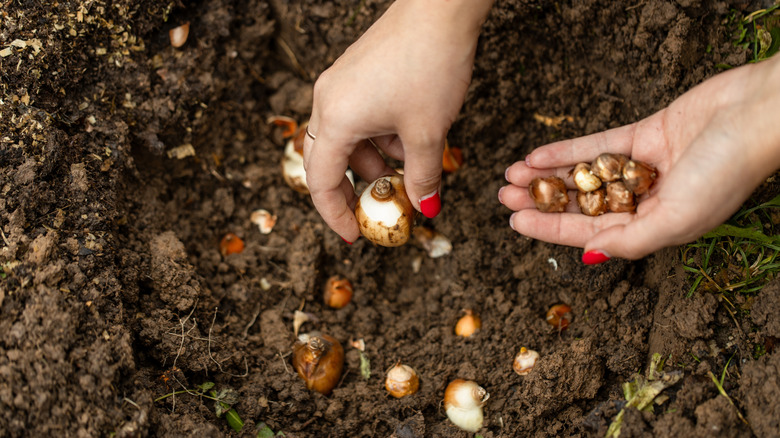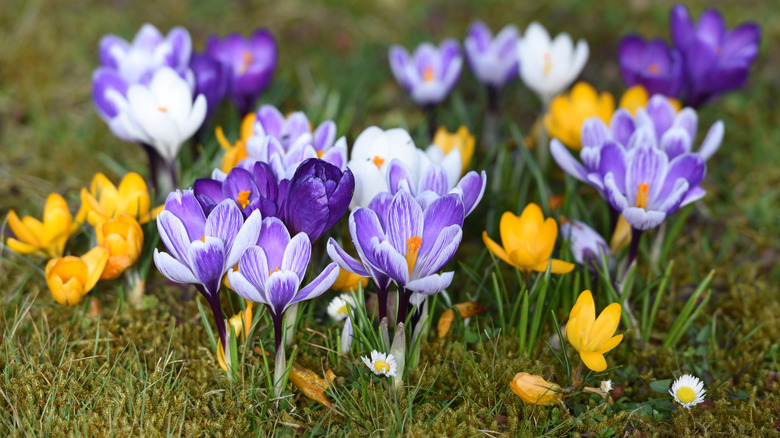Plant This Stunning Bulb In October For A Gorgeous Garden Come Spring
Bulbs are all about delayed gratification. Many of the gorgeous flowers that herald spring are the result of bulbs planted months earlier, before winter even set in. That's the case for most crocuses. A little bit of effort in mid fall yields a stunning display of delicate yellow, purple, and white blooms once winter ends and spring begins.
With the exception of autumn crocuses, which are planted in summer and bloom in fall, crocuses are planted in mid-autumn — around October in many regions. It's important to wait until temperatures have dropped below 60 degrees Fahrenheit to plant them, but don't wait so long that the ground is frozen. If you're growing other bulbs like tulips or daffodils, these can be planted at the same time. This is also the time to divide or transplant your crocus bulbs. Crocuses are hardy in USDA zones 3 through 8 and should return year after year if they're planted in the right location and protected from pests.
Planting your crocus bulbs
Plant your crocuses in a sunny to partly sunny spot, and be sure your soil is well draining. If necessary, you can amend your soil with compost to improve the drainage. Plant your crocus bulbs about 3 inches deep and cover them well with soil and mulch. If you have problems with squirrels or other rodents digging up your bulbs you can also cover the area where they're planted with burlap or chicken wire. You can even build a homemade flower bulb cage if you want.
Thanks to their short stature of only about 6 inches, crocuses can be extremely versatile additions to gardens and landscapes. While they're perfect for adding to the fronts of garden beds and borders to provide early spring color, they can also be planted directly into your yard to create a stunning bulb lawn. In a lawn they can be paired with other small spring bulbs like snowdrops or Siberian squill to create a meadowscape of brilliant spring blooms.

